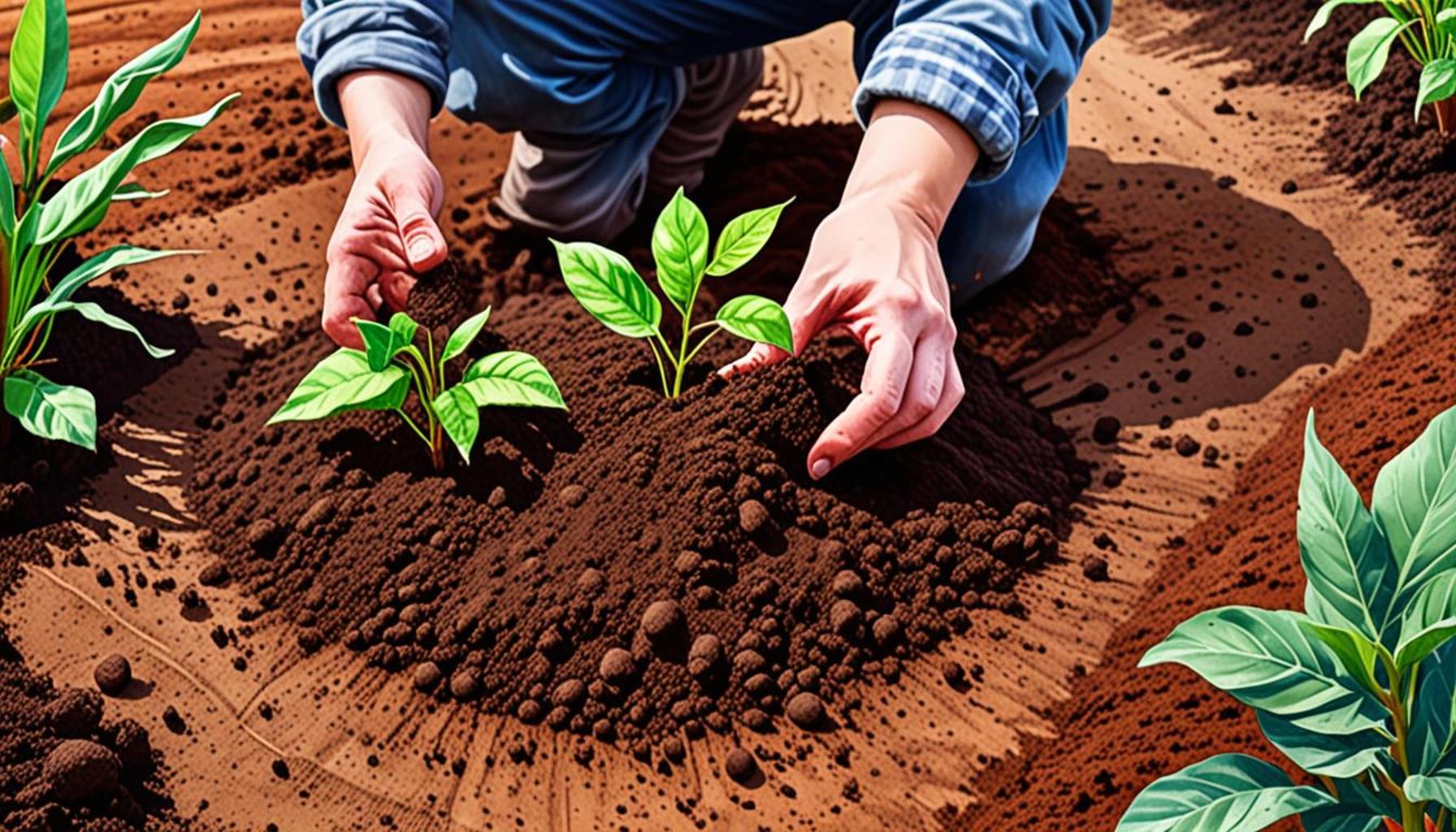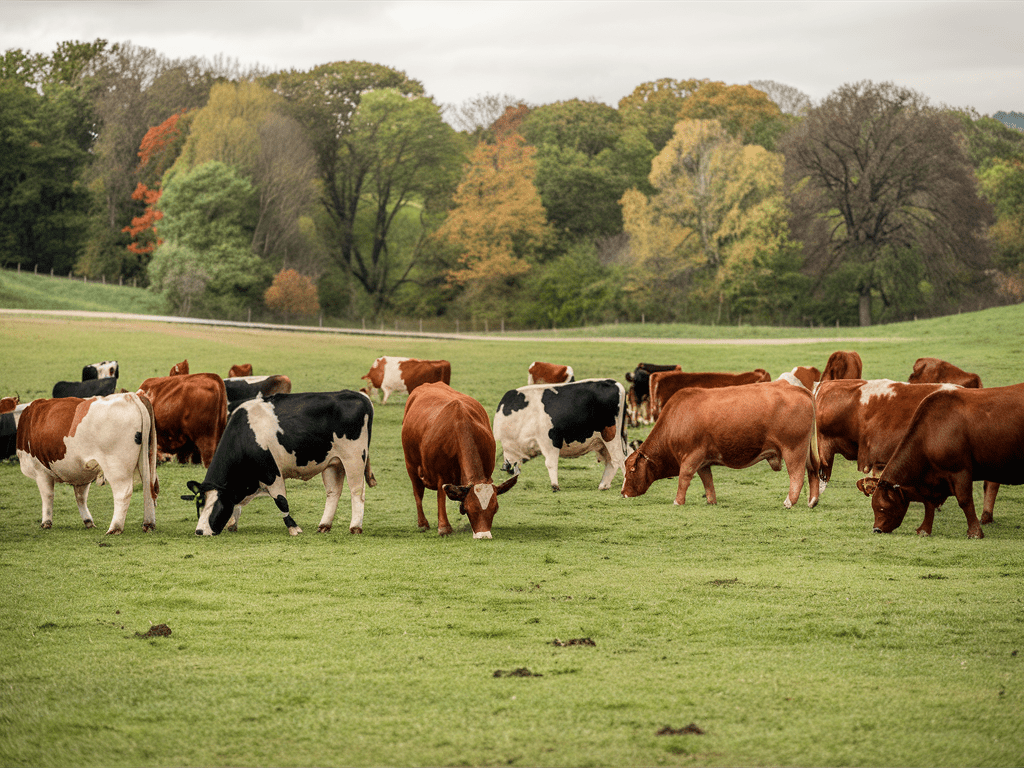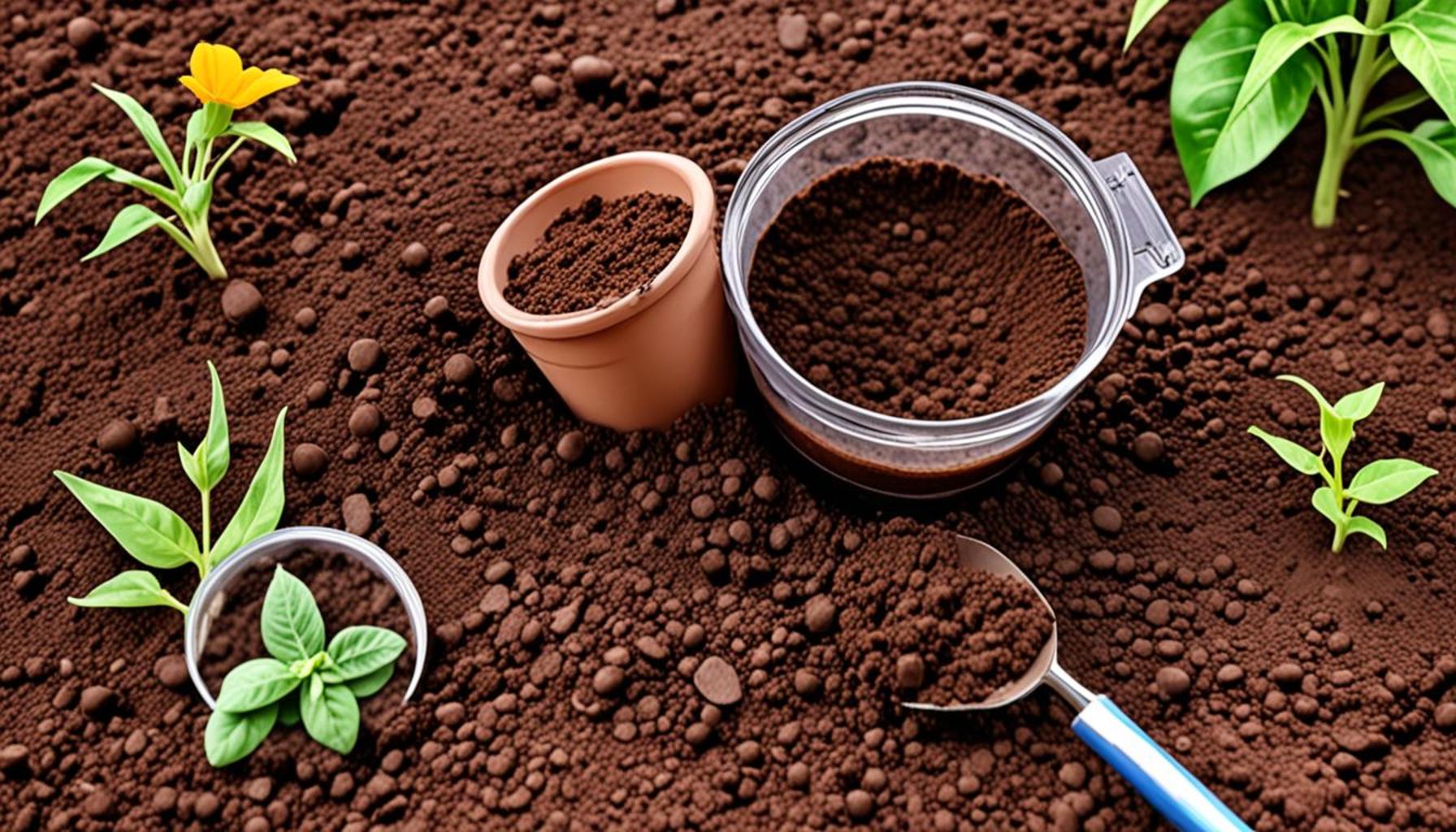Soil Preparation Techniques for Specific Cultures: How to Adapt the Soil for Different Plants

The Foundation of Successful Gardening and Farming
Effective soil preparation is an often-overlooked element that is crucial for any successful gardening or farming venture. The role of soil extends beyond just being a medium for planting; it acts as a living, breathing ecosystem that provides essential nutrients, retains moisture, and houses various organisms that contribute to plant growth. Understanding the intrinsic relationship between soil and plant health can drastically enhance one’s gardening outcomes.
The specific requirements of different plant species necessitate tailored soil preparation approaches, making it vital to recognize the unique characteristics of your soil. For instance, the three primary soil types—sandy, clay, and loamy—each have distinct properties. Sandy soils drain quickly but may lack nutrients, making them ideal for root vegetables like carrots. Meanwhile, clay soils hold moisture effectively but can become compacted, which can hinder plant growth. Loamy soils, often considered the gold standard, combine the properties of both sandy and clay soils, allowing for excellent drainage and nutrient retention.
- Soil Type: Assess your garden’s soil type to determine the necessary amendments needed for optimizing growth. For example, if you have predominantly clay soil, mixing in organic matter such as compost can improve drainage and aeration.
- Nutrients: Proper soil nutrition is key. Vegetables like spinach thrive with high nitrogen levels, while root crops like potatoes benefit from balanced nutrients and potassium-rich amendments.
- pH Levels: The pH level of your soil can affect nutrient availability. Testing the soil can reveal whether your garden is too acidic or alkaline for optimal plant health. For instance, azaleas prefer an acidic environment, while lavender thrives in alkaline conditions.
Understanding these elements can lead to improved growth conditions, which in turn enhances the productivity and vitality of your garden or farm. For instance, tomatoes prefer slightly acidic soil, typically falling within a pH range of 6.0 to 6.8, whereas blueberries require more acidic soil, ideally between 4.5 and 5.5. This knowledge not only assists gardeners in selecting the right plants but also informs them on how to amend their soil accordingly.
As we delve deeper into the specific techniques for soil preparation, you’ll discover methods such as testing your soil, amending with organic matter, and understanding the timing and application of fertilizers. Each of these techniques can be tailored to fit the unique requirements of your chosen plants, ensuring a thriving, vibrant garden that flourishes season after season.
EXPLORE MORE: Click here to learn how to create your own mini garden

Understanding Soil Requirements for Different Plants
To successfully enhance the growth of various plants, it is essential to comprehend the specific soil conditions each type requires. Recognizing that plants have distinct needs in terms of moisture, nutrients, and pH levels can make all the difference in achieving a bountiful harvest. Therefore, before you can effectively prepare your soil, conducting thorough research on the individual requirements of your crops is imperative.
Soil Testing: The First Step to Success
One of the most fundamental techniques for adapting soil for specific plants involves soil testing. Understanding the current composition and condition of your soil is critical. Soil tests will reveal nutrient levels, pH, and organic matter content, thus providing a detailed picture of what your soil lacks and how it can be improved. Various services and DIY kits make soil testing accessible and easy to execute, allowing gardeners and farmers alike to make informed decisions.
After testing, results may indicate that your soil requires amendments. For example, if you wish to grow tomatoes, which thrive in slightly acidic conditions, adjusting the pH may be needed if your test results reflect a more alkaline environment.
Soil Amendments: Feeding the Earth
Once you’ve tested your soil, the next step is implementing soil amendments. This involves adding organic matter such as compost, manure, or peat moss to improve the soil structure, drainage, and nutrient content. Different plants benefit from various types of amendments:
- Leafy Greens: Crops like lettuce and spinach thrive in nutrient-rich environments; thus, adding compost is key to fostering their growth.
- Root Vegetables: Carrots and beets require loose, well-drained soil. Incorporating sand or fine bark can improve soil texture and aeration, promoting healthy root development.
- Cucurbits: Plants such as pumpkins and cucumbers benefit from high levels of potassium. Incorporate rock phosphate or greensand in the soil to ensure ideal growth conditions.
The Right Timing for Soil Preparation
Timing is crucial when it comes to soil preparation. Each plant has its own growing season, and soil treatments should be adjusted accordingly to optimize the conditions in advance. For example, fall is an excellent time for soil preparation for spring crops, as the cooler weather allows amendments to break down and integrate into the soil more efficiently. Conversely, warm-season plants like peppers and corn need a completely different timeline that coincides with spring.
In conclusion, successful soil preparation revolves around understanding the specific needs of your desired plants. By performing soil tests, implementing the correct amendments, and respecting the right timing, you can create an optimal environment that encourages thriving gardens and fruitful farming ventures. Tailoring these techniques will not only enhance your plants’ growth but can lead to healthier ecosystems in the long term.
Understanding Soil Preparation Techniques
Adapting soil to suit different plants involves a deep understanding of both the properties of the soil and the specific needs of each plant species. It is essential to recognize that soil is not merely a growing medium but a complex ecosystem crucial for the plants’ growth, nutrient uptake, and overall health.
The Importance of Soil Texture
Soil texture plays a vital role in determining how well plants will thrive. For instance, sandy soils provide excellent drainage but may lack nutrients, making them ideal for drought-resistant species. Conversely, clay soils can retain moisture but might require amendments to enhance aeration for plant roots. Understanding these properties allows gardeners to amend soil accordingly, ensuring optimal conditions for each plant type.
Utilizing Organic Matter
Incorporating organic matter, such as compost or well-rotted manure, enriches the soil, improving its structure and nutrient content. This technique is particularly effective for cultivating heavy feeder plants, like tomatoes and peppers, which thrive in nutrient-rich environments. Organic matter increases microbial activity, aiding in the breakdown of nutrients for plant absorption and enhancing soil fertility.
Soil pH and Its Impact
Monitoring and adjusting soil pH is another essential technique in soil preparation. Different plants have varying pH requirements; for example, blueberries prefer acidic soils, while most garden vegetables flourish in neutral to slightly alkaline soil. Utilizing soil testing kits can provide key information about pH levels, enabling necessary adjustments through the application of lime or sulfur, depending on the desired outcome.
Table of Advantages of Soil Preparation Techniques
| Technique | Advantages |
|---|---|
| Soil Texture Analysis | Ensures proper drainage and nutrient availability tailored to plants’ needs. |
| Incorporating Organic Matter | Enhances soil fertility and structure, promoting healthy root development. |
| pH Adjustment | Optimizes nutrient uptake for diverse plant types, aiding in their growth. |
Understanding and implementing these techniques allows for successful cultivation, leading to healthier plants and bountiful harvests. Furthermore, ongoing soil management promotes sustainable gardening practices that benefit the ecosystem as a whole. For those eager to delve deeper, researching local amendments and specific plant needs is crucial to mastering soil preparation.
EXPLORE MORE: Click here to discover the best plants for your garden
Implementing Soil Preparation Techniques for Specific Plants
After determining the specific requirements of your plants and conducting the necessary soil tests, the next step is to implement targeted soil preparation techniques. Each plant species isn’t just looking for a hospitable environment; they also have unique responses to different soil conditions. Thus, customizing your approach can yield impressive results.
Cultivation Techniques: Tilling and Aeration
One of the most effective methods of preparing soil for garden culture is through tilling. This involves breaking up the soil to create a finer texture, which helps improve aeration and drainage. For instance, corn and beans benefit significantly from this technique, as they require loose soil for optimal root development. It’s advisable to till the soil in early spring, just before planting, to ensure that the nutrients are available and accessible at the time of germination.
While tilling has its benefits, over-tilling can also lead to soil compaction, which diminishes water retention and nutrient accessibility. Alternatively, cover cropping can be an invaluable technique for improving soil structure without disrupting it excessively. Crops like clover and vetch can be planted after harvesting to enhance soil quality and replenish nutrients during off-seasons.
Creating Raised Beds: The Advantage of Elevation
For those gardening in areas with heavy clay or poorly drained soil, constructing raised beds can be a game-changer. Raised beds offer superior drainage, making them ideal for moisture-sensitive crops, such as strawberries and garlic. By elevating the soil, you also improve air circulation and promote healthier root systems. The soil mix used within these beds can be tailored specifically to the needs of each crop, allowing for greater customization.
Mulching: Conserving Moisture and Suppressing Weeds
Once the soil is prepared, the application of mulch can protect and nurture the soil over the growing season. By covering the soil with organic materials like straw, wood chips, or shredded leaves, moisture is conserved while simultaneously keeping weeds at bay. This technique is particularly beneficial for crops like zucchini and bell peppers, which thrive in weed-free environments. Mulching can also contribute to soil structure over time as it decomposes, enriching the soil ecosystem.
Water Management: Irrigation Strategies
Proper irrigation is pivotal when preparing soil for specific cultures, as water is a life-giving component for all plants. Drip irrigation systems can be especially advantageous for targeted watering. They allow moisture to infiltrate the soil slowly, providing deep-root nourishment essential for crops like carrots and potatoes. This kind of system not only conserves water but also minimizes evaporation, making it beneficial in regions prone to drought.
Crop Rotation: Enhancing Soil Health
Finally, implementing a crop rotation strategy can significantly enhance soil quality and nutrient availability. By alternating different types of crops in a given area, you can prevent nutrient depletion and reduce pest populations. For instance, following legumes, which fix nitrogen in the soil, with heavy feeders like cabbage or tomatoes can create a sustainable cycle of growth and soil enrichment.
Every technique outlined serves as a building block in developing an ideal soil environment for diverse crops. By tailoring each method to the specific cultures you’re working with, you can transform your garden into a thriving ecosystem that consistently produces fruitful yields. The key lies not just in mere preparation but in understanding the dynamic relationship between soil health and plant vitality.
DISCOVER MORE: Click here to learn about the best plants for beginner gardeners
Conclusion: Elevating Your Gardening Game
Successfully preparing soil for specific plant cultures is not merely a matter of following standard practices; it’s an art that blends science, situational awareness, and an understanding of the unique requirements of each plant. As we have explored, techniques such as tilling and aeration, alongside innovative methods like raised beds and mulching, set the stage for thriving gardens. The importance of water management cannot be overstated, as it directly impacts plant health and yield, particularly in regions that experience irregular rainfall.
Moreover, adopting crop rotation strategies not only enhances soil nutrients but also creates a sustainable ecosystem that fosters resilience against pests and diseases. Observing these methods and understanding their specific benefits asserts the foundational principle of successful farming: healthy soil leads to healthy plants.
As you embark on or refine your gardening journey, consider examining the specific soil requirements for the varieties you wish to cultivate. Every step taken in soil preparation is a step toward a flourishing garden. With patience and attention to detail, you’ll not only reap a bountiful harvest but also contribute positively to the broader ecosystem. Embrace the adventure of evolving your gardening practices, and you may just find that the soil—once overlooked—transforms into the lifeblood of your garden. Dive deeper into each technique, explore local resources, and join communities that share an interest in sustainable gardening practices. Your plants, and the earth beneath them, will thank you.



